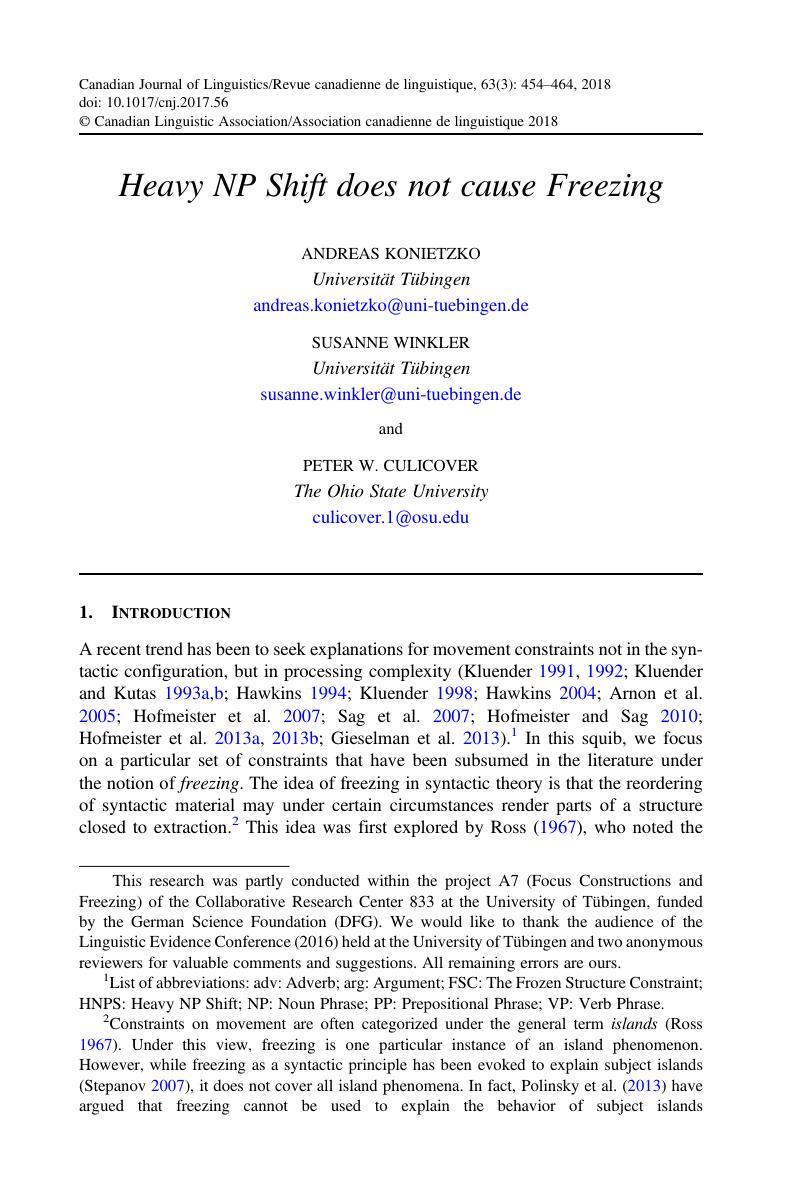Crossref Citations
This article has been cited by the following publications. This list is generated based on data provided by Crossref.
Little, Carol-Rose
2020.
Left branch extraction, object shift, and freezing effects in Tumbalá Ch’ol.
Glossa: a journal of general linguistics,
Vol. 5,
Issue. 1,
Fanselow, Gisbert
2021.
The Cambridge Handbook of Experimental Syntax.
p.
118.
Martens, Gouming
2021.
Frozen by context: Pragmatic factors of syntactic freezing.
Glossa: a journal of general linguistics,
Vol. 6,
Issue. 1,
Culicover, Peter W.
Varaschin, Giuseppe
and
Winkler, Susanne
2022.
The Radical Unacceptability Hypothesis: Accounting for Unacceptability without Universal Constraints.
Languages,
Vol. 7,
Issue. 2,
p.
96.



